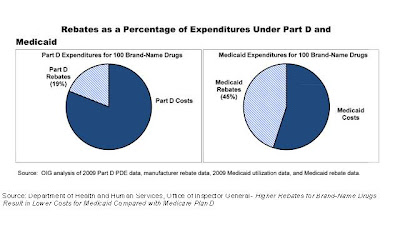Today’s Managing Health Care Costs Indicator is $11.54
Today’s Boston Massachusetts
“We think it’s a good thing for people to use their insurance card when their insurance card will pay for a service.”
But he’s demonstrably wrong.
The state purchases vaccines for $1.44 less per dose than they can be acquired by private purchasers. While all of us can go to a CVS or a Walgreens to get a flu shot, the injection that would have cost the state under $11 costs our insurer as much as $30.
Influenza vaccines save lives – and they reduce overall health care claims costs. They’re a good deal for insurers to cover – even if they pay physicians just about $20 for the vaccine and administration. But they’re an even better deal for the state to purchase (at a discount). Vaccination is a classic public good ; when I get vaccinated, not only am I protected, but I’m less likely to infect everyone I meet.
State purchase of vaccines has helped Massachusetts
So – the federal government will lower state aid, and the state will cut flu shot budgets. Either health insurance will purchase these vaccines for an even higher price, or people will go without the vaccinations, and suffer from worse health and sometimes die. Either way, for lack of paying for flu shots, health care will cost more – not less.
While I’m on the topic of cost shifting, Austin Frakt had a post in the Incidental Economist last week that mentioned another unpardonable cost shifting proposal, the proposal to raise the Medicare eligibility age. Raising the age from 65 to 67 would ‘save’ the federal government $5.7 billion. But it would cost those who would have otherwise been eligible for Medicare $3.7 billion, employers $4.5 billion, and would cause other premiums to rise by $2.4 billion due to the influx of older, sicker people into the health insurance exchanges.
Total “savings”: $5.7 billion
Total “costs”: $11.4 billion
This is a terrible deal. To lower health care costs we have to lower resource inputs – we can’t simply cut spending in one place (the federal government) and ignore how those costs will be borne by others.
(12-22-11 I corrected an error in earlier version which suggested Frakt was critiquing the Ryan plan. He's since done a multipart series on Medicare premium support proposals. )
(12-22-11 I corrected an error in earlier version which suggested Frakt was critiquing the Ryan plan. He's since done a multipart series on Medicare premium support proposals. )
 5:16 PM
5:16 PM
 indigo
indigo










